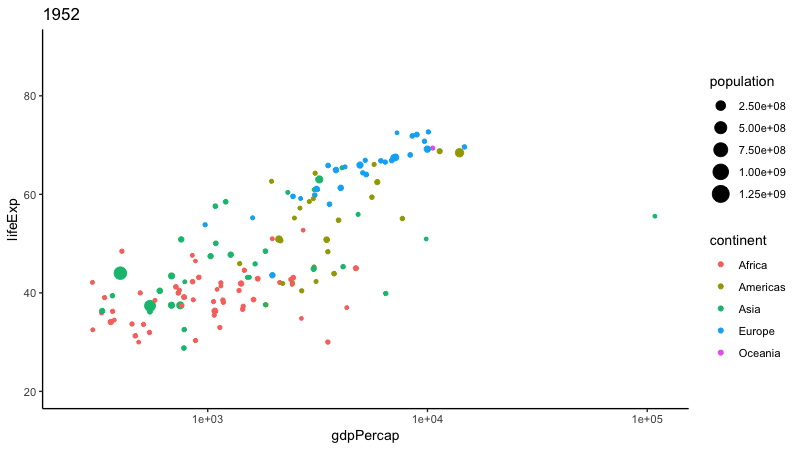Gifski on CRAN: the fastest GIF encoder in the universe
The gifski package which was demonstrated in May at eRum 2018 in Budapest is now on CRAN. Gifski is a simple but powerful package which can hopefully take away an important performance bottleneck for generating animated graphics in R.
What is Gifski
Gifski is a multi-threaded high-quality GIF encoder written in Rust. It can create animated GIF images with thousands of colors per frame and do so much faster than other software. The Gifski Website has more technical details and beautiful examples.
The R package wraps the Rust crate and can be installed in the usual way from CRAN. One of the major benefits of Rust is that it has no runtime, so the R package has no dependencies.
install.packages("gifski")
On Linux you need to install cargo to compile the rust code, but the package does not require any external libraries. Cargo automatically compiles and links all Rust code when building the R package. If you are on MacOS, try installing from source to see how it works:
install.packages("gifski", type = "source")
How to Use
The R interface is very simple: either generate a GIF from a set of images, or directly from the R graphics device. The ?gifski manual page contains example of both. The gifski() function combines a set of PNG images into a single animated GIF file:
# Convert png files to gif
png("frame%03d.png")
par(ask = FALSE)
for(i in 1:10)
plot(rnorm(i * 10), main = i)
dev.off()
png_files <- sprintf("frame%03d.png", 1:10)
gif_file <- tempfile(fileext = ".gif")
gifski(png_files, gif_file)
utils::browseURL(gif_file)
Alternatively the save_gif() function captures plots R generated in an R expression and saves them as a animated gif, just like e.g. animation::saveGIF() but much faster:
# Example borrowed from gganimate
library(gapminder)
library(ggplot2)
makeplot <- function(){
datalist <- split(gapminder, gapminder$year)
lapply(datalist, function(data){
p <- ggplot(data, aes(gdpPercap, lifeExp, size = pop, color = continent)) +
scale_size("population", limits = range(gapminder$pop)) + geom_point() + ylim(20, 90) +
scale_x_log10(limits = range(gapminder$gdpPercap)) + ggtitle(data$year) + theme_classic()
print(p)
})
}
# High Definition images:
gif_file <- save_gif(makeplot(), width = 800, height = 450, res = 92)
utils::browseURL(gif_file)

Gifski shows a progress meter while generating the GIF. Running this example shows that the GIF encoding is no longer a serious overhead: time spent in encoding is only a small fraction of the total time to generate the plot. Hopefully this will make it easier to generate animations with hundreds or even thousands of frames using for example the gganimate package.
More about Rust in R
This is the first CRAN package that interfaces a Rust library. In this case the R package itself does not contain any Rust code because we can call Rust directly from C.
If you are interested in learning more about using Rust in R packages, have a look at my slides from eRum 2018. Also see the r-rust organization on Github for more examples R packages, especially the hellorust package.
